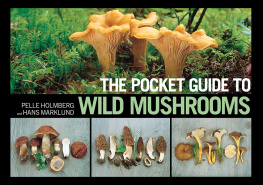The mission of Storey Publishing is to serve our customers by publishing practical information that encourages personal independence in harmony with the environment.
Edited by Carleen Madigan
Art direction and book design byCarolyn Eckert and Stacy Wakefield Forte
Text production by Stacy Wakefield Forte and Jennifer Jepson Smith
Indexed by Samantha Miller
Cover photography by Barbora Batokova/stock.adobe.com, bk. row 4 r.; EvgenijYulkin/Stocksy, bk. inside; frolova_elena/stock.adobe.com, bk. row 2 r.; IonescuBogdan/stock.adobe.com, bk. row 1 l.; JohnatAPW/stock.adobe.com, bk. row 4 l.; Krzysztof Niewolny/Unsplash, front; Lebrac/Wikimedia Commons/CCBY-SA 3.0, bk. row 3 r.; Lisa Mackie/Shutterstock.com, bk. row 1 r.; Liz Nemeth, bk. au.; misuma/iStock.com, frt. inside; Pihuliak/stock.adobe.com, bk. row 3 l.; PiLensPhoto/stock.adobe.com, bk. row 5 l.; Ramona Heim/stock.adobe.com, bk. row 2 l.; valeriyap/stock.adobe.com, bk. row 5 r.
Interior photography credits appear on page
Text 2021 by Frank Hyman
Ebook production by Kristy L. MacWilliams
Ebook version 1.0
October 13, 2021
All rights reserved. No part of this book may be reproduced without written permission from the publisher, except by a reviewer who may quote brief passages or reproduce illustrations in a review with appropriate credits; nor may any part of this book be reproduced, stored in a retrieval system, or transmitted in any form or by any meanselectronic, mechanical, photocopying, recording, or otherwithout written permission from the publisher.
The information in this book is true and complete to the best of our knowledge. All recommendations are made without guarantee on the part of the author or Storey Publishing. The author and publisher disclaim any liability in connection with the use of this information.
The information in this book is provided only as a resource. Any reader who forages for wild mushrooms and chooses to ingest them does so at his or her own risk; without a 100 percent positive identification, no wild mushroom should ever be consumed. Consulting with an expert mushroomforager, who can identify the mushroomsin person, is recommended.
Storey Publishing
210 MASS MoCA Way
North Adams, MA 01247
storey.com
Library of Congress Cataloging-in-Publication Data on file
Storey books are available at special discounts when purchased in bulk for premiums and sales promotions as well as for fund-raising or educational use. Special editions or book excerpts can also be created to specification. For details, please call 800-827-8673,or send an email to .
This book is dedicated to the memory of Beatrix Potter,
a forager and feminist ahead of her time.
And to my niece, fellow forager, and favorite wood sprite, Avery Crochetire, whom I know to be fully capable of picking up Potters torch and carrying on.
Contents
Chapter 1:
Chapter 2:
Chapter 3:
Chapter 4:
Chapter 5:
Chapter 6:
Chapter 7:
Whats Different about This Book?
This book is not like other mushroom ID books. But that doesnt mean theres anything wrong with it. Actually, this is the book that I wish Id had when I first started foraging.
- Its compact.
- It only covers common mushrooms that youll want to eat, use, or avoid.
- The descriptions focus on important details that differentiate each mushroom from its look-alikes.
- Latin names are translated.
- It omits subjective mushroom characteristics that arent critical, that vary in the field, and that are subjective, like aroma.
- The mushrooms arent arranged alphabetically (novices dont know their names yet!) but by what the novice forager does know: the season, the mushrooms location (on wood or on the ground), and whether or not they have gills.
- Almost all the mushrooms in this book can be safely identified in the field without knowing the spore print color. Ive still included the spore print color in the What, Where & When sections, for your own knowledge.
- It provides a few stories for the sake of sharing the flavor of what its like to be a forager.
- It contains links to professional foragers recipes (see ).
- And it has a sense of humor. I hope.
Another thing thats different about this book is that its written by a mushroom hunter for other mushroom hunters. Ive been foraging since 2004. Ive learned my trade from foragers in eight US states and six countries, and Im certified to safely sell wild mushrooms to the public in three US states. But I dont have a degree in mycology (the branch of biology dealing with fungi). Most of the tens of millions of people who successfully forage wild mushrooms on this planet dont have a degree in mycology. And to safely hunt edible mushrooms, you dont need one either.
Whats for Dinner?
Throughout the book, weve included the following icons to serve as quick indicators of whether or not a mushroom can be safely eaten. Be sure also to read the text that accompanies the mushroom in question, in case there are additional factors to consider.
 An edible species |  An medicinal species |
 A species you should not eat, either because it could make you sick, its edibility is unknown, or it just doesnt taste good |  A species that could kill you if you eat it |
What Those Other Books Have
Many, if not most, mushroom ID books are written by degreed mycologists to appeal to other degreed mycologists and very serious hobbyists. And thats all well and good. Truly. For intermediate and advanced mushroom hunters, that can be useful. I own and enjoy many of those books myself. But somenot allof those books have tendencies that arent always helpful to the novice and intermediate mushroom hunter:




















